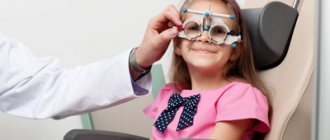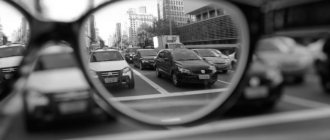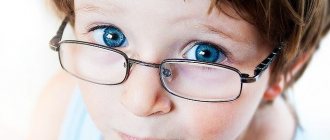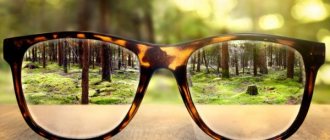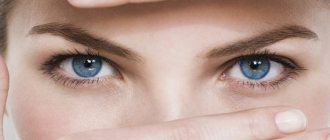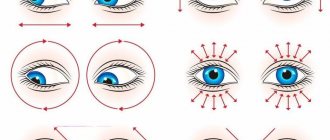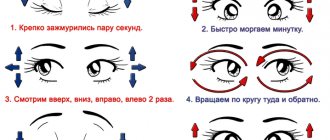Are myopia and sports compatible? Previously, there was only one answer to this question - of course not. However, with a competent approach to this problem, certain physical exercises are not only not prohibited, but are even recommended, since they will help strengthen the blood vessels of the eye and stabilize the condition. With a complete refusal of any physical activity, muscles relax and tone decreases throughout the human body. [toc]
Health groups for myopia
The first restrictions on physical activity are imposed at school during physical education lessons. The health group is determined depending on the degree of myopia and the presence of degenerative changes in the fundus. There are 3 health groups for physical education, which provide for limitation of physical activity and exemption from it:
- The first health group, the main one. Includes children with normal vision and acuity deterioration of less than 0.5 when uncorrected. Children with established hypermetropia and myopia over 3 diopters are not allowed into the group.
- Second health group, preparatory. It includes children with vision below 0.5 diopters, subject to correction. Children with myopia and hypermetropia of more than 6 diopters are prohibited from visiting the second health group. Neither the first nor the second health group can include children with inflammatory and degenerative eye diseases.
- Third health group, specialized. Provides exemption from physical education and conducting classes according to an individual program. A visit to this health group is recommended for children who have myopia and hypermetropia over 6 diopters, degenerative changes in the fundus and chronic inflammatory processes.
Features of myopia
Ophthalmologists distinguish several degrees of the disease:
- first (up to 3 diopters);
- second (from 3 to 6 diopters);
- high (more than 6 diopters).
According to the clinical course, myopia is distinguished between static and progressive. The latter is the most dangerous, since it occurs practically without symptoms; its development can only end at the moment when the body as a whole stops growing. Sometimes indicators of this type of myopia reach 40 diopters and, naturally, are accompanied by complications.
How to understand that you have progressive myopia? First of all, vision decreases when viewing objects or objects at long distances. But it is worth noting that progressive myopia can be easily corrected, especially in the initial stages. There is also such a type of this disease as regular myopia. It is this that is extremely dangerous, since it can negatively affect the overall health and subsequently lead to blindness.
What exercises are useful?
Depending on the degree of progression of the disease, in each specific case you can select special exercises with which you can strengthen the eye muscles and normalize the circulation of intraocular fluid.
Indeed, in the absence of physical activity, including on the eye muscles, they weaken and even atrophy. With the stress to which the eyes are exposed during the educational process, myopia can increase significantly. Very often this happens in higher educational institutions, where the curriculum is very intensive.
Eye exercises
Myopia is not a diagnosis that prevents you from moving. Cyclic exercises are very useful for blood circulation and strengthening muscles. The main thing is not to exceed the recommended intensity and duration. In this case, the main indicator is heart rate.
For weak and moderate myopia, it is necessary to give preference to exercises in which the pulse does not exceed 100-140 beats per minute. This could be jogging or moderate intensity swimming.
Some sports games give good results - pioneer ball, volleyball, basketball, table tennis, etc. In this case, a person must carefully monitor the ball, which is either close or far away, and switch his vision. This helps to enhance accommodation and is a successful prevention of further progression of the disease.
What could be the causes of myopia and how does it manifest itself in a person?
Below we will talk about those factors that can affect the development of myopia. But there is no need to panic. In any case, only a specialist can answer the question of whether your child or you have myopia.
- First of all, it is worth talking about heredity. If you have someone in your family who suffered from myopia, your task is to regularly visit the ophthalmologist’s office and not ignore the signals of your body.
- The second reason for the development may be unfavorable environmental conditions, especially during prolonged work at close range. Experts call this type of myopia “professional” and “school.” The latter can continue until the organism is fully developed, approximately eighteen or twenty years. We talked about this above.
- Also, when talking about the causes of myopia, ophthalmologists mention the initial weakness of accommodation of the eye, unbalanced tension of accommodation or convergence.
What sports should you not engage in if you are nearsighted?
While at school, children often attend various clubs and sports sections. A diagnosis of myopia should not become an obstacle to a child’s ability to be on par with his peers. However, before you finally settle on choosing a particular sport, you should take into account the intensity of the load and existing contraindications.
When choosing a sport, you must take into account the degree of myopia and the presence of changes in the fundus. The most important factor is the 2nd factor, since it indicates the progression of the disease and the appearance of degenerative changes.
With any myopia, it is strictly forbidden to engage in strength sports, skiing, weightlifting and athletics, etc. These are:
- boxing;
- struggle;
- tennis;
- sports and rhythmic gymnastics;
- Ski jumping;
- alpine skiing.
With moderate myopia, the contraindications are not so broad, especially in the absence of any changes in the fundus. However, it is still not recommended to engage in sports that require large and prolonged physical exertion. In addition, you need to exclude exercises that require jumping from a height of more than 1.5 m.
Mild myopia does not imply any special restrictions, except those that are imposed for any degree of the disease. It is recommended to choose cyclic sports without large and prolonged loads. It is not allowed to increase heart rate more than 180 beats per minute when performing exercises. Therefore, it is better to give preference to calmer sports:
- running;
- race walking;
- swimming;
- rowing;
- fencing;
- shooting, etc.
However, even though cycling sports are useful for strengthening the eye muscles, you need to be careful. Acrobatics, gymnastic exercises on apparatus, and jumping to any height should be avoided, as this can lead to the development of ischemia.
If a person wears lenses, this is not a contraindication to playing sports. While playing some sports, you don’t even have to take them off.
Physical education and sports classes for myopia at Tver Medical College
The results of research in recent years, especially concerning the mechanisms of origin of myopia, have made it possible to re-evaluate the possibilities of physical education for this visual defect. Limiting the physical activity of people suffering from myopia, as was recommended until recently, is recognized as incorrect. The important role of physical education in the prevention of myopia and its progression is shown, since physical exercise contributes to both the general strengthening of the body and the activation of its functions, as well as increasing the performance of the ciliary muscle and strengthening the scleral membrane of the eye.
Target -
theoretically substantiate and experimentally test the effect of physical activity on visual acuity.
An object -
visual acuity and refraction in TMK students.
Item -
the influence of physical activity on visual acuity and refraction.
Hypothesis -
The condition of the visual organ will improve if students perform measured physical activity.
Tasks:
1) study the literature on this issue;
2) determine the level of physical activity based on the state of the organ of vision;
3) test the possibility of improving visual acuity in students during physical education classes at TMK.
Methods:
1. theoretical analysis of literature on the research topic;
2. experiment;
3. conversation;
4. observation;
5. quantitative and qualitative analysis of the results of the ascertaining and formative experiment.
It has been established that girls aged 15–17 years with moderate myopia are significantly behind their peers in terms of physical fitness. They experience a significant decrease in blood flow in the vessels of the eye and a weakening of accommodative ability. Cyclic physical exercises (running, swimming, skiing) of moderate intensity (pulse 100–140 beats/min.) have a beneficial effect on the hemodynamics and accommodative ability of the eye, causing a reactive increase in blood flow in the eye some time after the load and increasing the efficiency of the ciliary muscles. After performing cyclic exercises of significant intensity (pulse 180 beats/min.), as well as exercises on gymnastic apparatus, jumping rope, and acrobatic exercises, severe ocular ischemia, which persists for a long time, and deterioration in the performance of the ciliary muscle are noted.
Research has established that a decrease in the general motor activity of students with increased visual load can contribute to the development of myopia. General developmental physical exercises in combination with special exercises for the ciliary muscle have a positive effect on the functions of the myopic eye. Based on the results of the research, a method of physical therapy for students with myopia has been developed and its effectiveness has been shown when used as part of a set of measures to prevent myopia and its progression.
The peculiarity of physical education of students, which helps prevent myopia and its progression, is that in classes, in addition to general developmental exercises, they also include special exercises that improve blood supply to the tissues of the eye and the activity of the eye muscles, primarily the ciliary muscle.
Table 1
Restrictions on physical education classes for students based on the state of the organ of vision
| Physical education group | Visual acuity | Refraction | Other changes in the organ of vision |
| I. Basic (full program classes, passing GTO standards, participation in sports sections and competitions) | Students with uncorrected visual acuity below 0.5 in the better seeing eye are not admitted. | Students with hypermetropia and myopia greater than 3.0 diopters are not admitted. | Students with chronic inflammatory and degenerative eye diseases are not admitted |
| II. Preparatory (the main physical education program is extended by 1–1.5 years; sports training and participation in competitions are excluded) | Students with corrected visual acuity below 0.5D in the better seeing eye are not admitted. | Students with hypermetropia and myopia greater than 6.0 diopters are not admitted, regardless of visual acuity. | Students with chronic inflammatory and degenerative eye diseases are not admitted |
| III. Special | Students with hypermetropia and myopia greater than 6.0 diopters, regardless of visual acuity, as well as with chronic inflammatory and degenerative eye diseases are engaged in an individual special program | ||
table 2
Main contraindications to sports for people with myopia
| Kind of sport | Contraindications depending on the degree of myopia and eye condition | Recommendations for using optical correction |
| Boxing | Any degree of myopia | Contact |
| Struggle | Any degree of myopia | Contact |
| Weightlifting | Any degree of myopia | Contact |
| Sports gymnastics | Any degree of myopia, except stationary low myopia | No correction |
| Rhythmic gymnastics | High myopia, as well as any degree of myopia with complications in the fundus | If vision is significantly reduced - contact correction |
| Swimming | Complicated myopia | No correction |
| Diving | Any degree of myopia, except stationary low myopia | No correction |
| Rowing | Complicated myopia | Spectacle |
| Ski race | Complicated myopia | No correction |
| Ice-skating race | High myopia, as well as any degree of myopia with complications in the fundus | No correction |
| Race walking | Complicated myopia | No correction |
| Sprinting | Any degree of myopia, except stationary low myopia | No correction |
| Middle and long distance running | Complicated myopia | No correction |
| Throwing | High and complicated myopia | No correction |
| Jumping | Any degree of myopia | No correction |
| Volleyball basketball | High myopia, as well as any degree of myopia with complications in the fundus | No correction |
| Football, hand ball | Any degree of myopia, except stationary low myopia | No correction |
| Hockey | Any degree of myopia | No correction |
| Large tennis, table tennis, badminton | High myopia, as well as any degree of myopia with complications in the fundus | No correction |
Mandatory physical education classes for TMK students are carried out in three groups: basic, preparatory and special.
To main page
This group does not allow students with uncorrected visual acuity below 0.5 in the better-seeing eye, or with hypermetropic or myopic refraction of more than 3.0 diopters.
In preparatory
group, sports training and competitions are excluded.
Students with hypermetropia and myopia greater than 6.0 diopters, regardless of visual acuity, are not allowed to participate in classes in this group.
Students with hypermetropia and myopia more than 6.0 diopters, regardless of visual acuity, as well as with chronic and degenerative eye diseases, are trained in special
group according to an individual program.
The selection of students into each of these groups according to the state of the organ of vision is carried out in accordance with the instructions given in the table below (Table No. 1).
For students suffering from myopia and included in a special group, special exercises such as physical therapy have been developed.
As noted above, a significant proportion of students suffer from myopia. As one progresses to senior years, there is a tendency for its progression. This is obviously caused by high visual load, insufficient physical activity, and violation of hygienic working and living conditions. When distributing students with myopia into study groups for physical education, taking into account the data of a medical examination, one should be guided by the above restrictions.
The following forms of physical education are used: compulsory and elective classes; cultural events; independent exercises, including morning hygienic exercises and measures to harden the body, as well as special exercises for the ciliary muscle.
Students with mild myopia are included in the main group and can engage in physical education; playing sports games is useful. Constantly switching vision when playing volleyball, basketball, tennis from close to far and back helps to enhance accommodation and prevent the progression of myopia.
If there is moderate myopia, students are included in the preparatory medical group; they must engage in physical education in the preparatory educational department. Practical classes with them should be conducted separately from students of the main medical group.
It is advisable to introduce some restrictions into the program requirements for them: exclude jumps from a height of more than 1.5 m, exercises that require great and prolonged physical stress. The degree of neuromuscular tension and the overall load during physical education should be somewhat lower than that of students from the main medical group. For students of the preparatory medical group, along with educational classes, it is also necessary to provide independent classes, including special exercises for the eye muscles or physical therapy classes.
Students with high myopia (6.0 diopters or more) should engage in physical education only in a special medical group.
The following forms of physical education are used:
a) compulsory and elective classes;
b) independent exercises, including morning hygienic exercises and measures to harden the body, exercises to increase the level of general and strength endurance, as well as training the ciliary muscle. In addition, physical therapy exercises can be recommended.
Physical exercise and sports are the main means of promoting health and maintaining good performance at any age, but for people suffering from diseases of the organ of vision, special sets of exercises are necessary.
Eye gymnastics for any age.
It will help young and old people strengthen and maintain their vision. Eye gymnastics is done with eyes closed once a day.
1. Rotate the eyeballs in a circle (as wide as possible) - 10 times;
2. Move the eyeballs along a rectangular frame, fixing the corners with your gaze (right - left) - 10 times;
3. Movements of the eyeballs diagonally in the same frame - 10 times;
4. Rotate the eyeballs in a circle 2 times, stopping your gaze in the center of the circle - 10 times;
5. Rotate the eyeballs in a figure eight pattern - 10 times;
6. Look at a bright light (a light bulb at a distance) and quickly close your eyes with your palms (light - shadow) - 10 times;
7. Shift your gaze from the tip of your nose to the center of your forehead or look into the distance, and then to the tip of your nose - 10 times;
8. Blink quickly.
Decreased vision in most cases occurs due to a weakening of the muscle system that holds the lens at the required focal length. Therefore, the main task for restoring vision is to strengthen the eye muscles. This can be achieved by organizing additional blood flow to them, using physical or energetic influence.
One of the most effective methods of physical and energetic influence is the Taoist system of muscle training. This system is recommended not only as a treatment, it can also be used to prevent eye diseases. The technique is simple and non-tiring. Do the following exercises every day, morning, afternoon and evening: Rub the palms of your hands together until you feel a noticeable warmth. While rubbing, make sure that one palm moves relative to the other no more than from the center to the fingertips without leaving each other. Then stand or sit, keeping your back straight and your legs together. Pull your tightly closed palms up to eye level, then open your palms and cover your eyes with them. Gently press your palms, hot from friction, to your eyes and release. Repeat this 8 times. Taoists call this exercise “pressing the eyes.” After this, make your palms into boats, giving freedom to your eyes, but do not let go of your hands. Open your eyes under your palms and rotate your eyeballs from left to right and right to left and 8 times in each direction. Finally, close your eyes 8 times with slight tension.
Thus, you will do “three strokes of the eyes” - an exercise from the Taoist health system, the effectiveness of which is based on increasing blood circulation through the vessels and energy through the channels and meridians. When palms hot from friction are pressed against the eyes, biologically active points near the eyes and behind the fundus are affected. Movements of the eyes and eyelids train the eye muscles. Using this technique, you can also treat some eye diseases: night blindness, inflammation of the optic nerve, myopia, farsightedness, cataracts.
As a complement to the Taoist system, use the technique of restoring the visual ability of the eyes: sit in a comfortable position, straighten your back. As you inhale, imagine and feel that flows of energy (prana) are entering you through the solar plexus, hold your breath, and mentally concentrate this flow into a small cloud, then also mentally, as you exhale, direct it along the shortest path to the eyeballs. Repeat this exercise for 8-10 minutes daily. In this way, you will constantly recharge your eyes with energy, which will give a noticeable positive effect after a certain time.
All these exercises will take you very little time, but regularity and consistency are important here.
In the 2013/2014 academic year, there were 793 students at Tver Medical College, of which
in the main group there are 694 people,
there are 71 people in the preparatory group
in vision - 29 people are students with myopia from -3.5D to -6.0D, of which 14 are students with myopia from -3.5D to -4.5D
18 students with myopia from -4.5D to -5.25D
7 students with myopia from -5.5D to -6.0D with a myopic cone around the disc
in the special group - 28 people, of which 17 people are visually impaired.
these are students with myopia - 6.5D and > of them 10 students with myopia - 6.5D with a myopic cone
4 students with complicated myopia - staphyloma around the optic disc
3 students with degenerative retinal changes
A year later, in the experimental group, which consisted of 43 people (29 people - the preparatory group and 14 people - the special group), it was determined that:
refraction decreased by 0.5D - 0.75D in 16 students - 37%
refraction remained at the same level in 24 students - 54%
refraction increased >0.5D in 3 students - 9%
whereas according to statistics this is observed in 3%, 8% and 89%, respectively.
Studies conducted on students in the experimental group on the basis of TMK showed a significant decrease in the number of students with progression of myopia - 24 students and, conversely, a noticeable decrease in myopia, due to the strengthening of the accommodative apparatus in 16 students.
Our research allows us to conclude that testing the method of dosing physical activity in students with moderate and even high degree myopia, taking into account the above effects of physical exercise, is relevant and the use of proper dosage helps prevent the progression of myopia.
How to prevent myopia from progressing?
You can stabilize myopia and prevent its further progression and deterioration of vision with the help of regular exercises.
The main rule for achieving success is that morning exercises should be carried out regularly, be sure to include a set of exercises to strengthen the ciliary muscle of the eye. Hardening plays an important role in achieving stable remission. With its help, you can strengthen your immune system and increase resistance to viral and bacterial diseases.
A specialist - a sports medicine doctor or an ophthalmologist - will help you develop a set of exercises and determine the required load. Sports will not only strengthen the body, but will bring a lot of pleasure.
In addition, you should be regularly examined by an ophthalmologist and, if necessary, undergo preventive treatment. If vision deteriorates, you cannot ignore the fact of disease progression or self-medicate; you should immediately seek advice from a specialist .
This will make it possible to prevent further development of the disease, deterioration of vision and the development of irreversible processes in the fundus.
What is myopia?
Statistics show that myopia progresses every year and is mainly diagnosed in young people and children. According to some data, from two to sixteen percent of schoolchildren suffer from myopia. Among students this percentage is much higher, since
In this article
- What is myopia?
- Features of myopia
- What could be the causes of myopia and how does it manifest itself in a person?
- What treatment is needed for myopia?
- Myopia and sports: are there any contraindications?
- What sports are suitable for students with myopia?
- Additional Information
- Conclusion
they are more stressed from regular work at the computer and practice preparing assignments at night. Also, do not forget that heredity plays an important role in the development of myopia. However, as recent research shows, it is not always the determining factor. So, what is myopia, or myopia? This is a pathology in which a person has difficulty seeing objects located at long distances. Typically, this disease begins to develop during school years, since the child spends most of his time reading and writing at close range. With poor lighting and improper study conditions, the risk of developing the disease increases. With the introduction of computer science in schools and the proliferation of computers, tablets and smartphones, the situation is becoming increasingly critical. If myopia is not caught in time and diagnosed, it will become progressive and in the future threaten blindness.
Methods of influence
The treatment regimen is selected individually and depends on the degree of diopter reduction. If the diopter decreases by 0.5 per year, watchful waiting in combination with visual exercises is more often recommended. There are also other cases of therapy:
- Correction using optics. After visometry, a good choice of glasses is selected for the child. For mild myopia, wearing glasses is necessary when focusing your gaze on distant objects. If the diopter is more than -5, wearing glasses is required constantly.
- Conservative therapy. It consists of prescribing a number of drugs: vitamins, eye drops with a vasodilating effect, agents to reduce intraocular pressure. The use of medications is carried out strictly on the recommendation of the attending ophthalmologist.
- Physiotherapeutic procedures. In combination with drug treatment, a course of physical therapy may be recommended: electrical stimulation, exercises to improve accommodation, medicinal electrophoresis with vitamin B2.
- Surgical intervention. In the presence of a high degree of myopia and its rapid progression, scleroplasty is recommended in order to strengthen the sclera of the eye. Scleroplasty is a microsurgical operation, it is as safe as possible, and has almost no contraindications or side effects. It is possible to prescribe vision correction using a laser once the child reaches 18 years of age.

